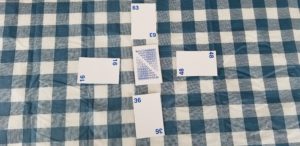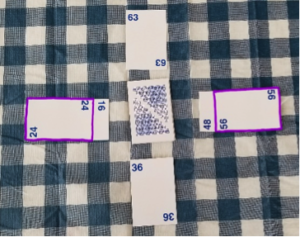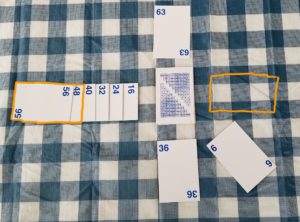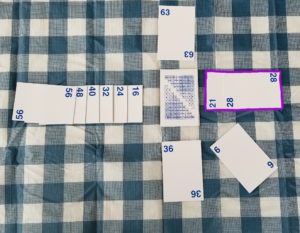We played this game, Lowest in the Corners, game P18 in the Math Card Games book, with four people, ages 9 to adult. At first, I thought it may be difficult for Peter, the 9-year-old, but he had no problem catching on after we played an open-handed round first. Honestly, that helped me too!
To start, you need to choose four sets of multiplication cards. For example, for the multiples of 6 you will need 6, 12, 18, 24, 30, 36, 42, 48, 54 and 60. We chose 6s, 7s, 8s and 9s. They do not have to be consecutive sets, but do keep track of what multiples you are working with. And make sure you have complete sets or you will have frustrated kids. Don’t even ask how I know that!
After setting this game up, I was happy that they wanted to play several times. This is a low stress but satisfying game that we will play again when Dad comes home. Keep reading for his thoughts below….

Shuffle the four sets together and deal seven cards to each person. The rest goes in the middle as the stock. Take four cards from the pile and place them face up around the stock on the top, bottom, left and right. The goal is to get rid of all your cards first.
On Peter’s turn, he took a card from the stock, a 14, and put 24 on 16 and 56 on 48, both being multiples of 8.

Play as many of your cards as possible by building the multiples from lowest to highest number.
Ian then played 32 and 40 on the 24 and placed a 6 in the corner. The first card in a corner must be the lowest multiple of the set.
Next, he moved 48 and 56 from the right position to the 40 on the left. This freed up space to play another card.

He put down 21 and 28 in the open spot. His turn was done; he was so close to playing all his cards and going out!

We kept playing until someone was finally able to lay down their last cards. Guess who won? Ian!
Avoid using duplicate numbers for building the same set. So, if there are two 24s on the table, one may be used for the 6s and one for the 8s but they can’t be used both for the same set.
Finally, if you can play a card, you must. No holding out to prevent another player from winning.
Would you like to see a video of this game? We have one here for you!
My math-loving husband, Martin, really enjoyed this game and sees a lot of extended learning potential. Here is his commentary: “This is a fun and interesting game that grows with the child’s understanding of multiples. Developing an understanding of how to add cards to a pile to build consecutive multiples is a useful skill, but an even higher skill is the ability to see how cards from different piles can be combined.
“It takes practice to build pathways in children’s brains to do it quickly and learning this through games is fun. Soon children will make useful observations, such as, moving multiple cards from one pile preserves the type of multiple, whereas moving just the top card can change the multiple that it represents. For example, if 42 was on top of 35, it represents a multiple of 7 – moving the 42 on top of 36 makes it a multiple of 6. This may be obvious to adults, but Lowest in the Corners helps children to develop visual and mathematical skills needed for this understanding.”
Looking for a variation? Flex your brain muscle by playing this as the Highest in the Corners by building multiples from highest to lowest: 90, 81, 72, 63, 54,45, 36, 27, 18, and 9.
We love to read your comments. Let us know how Lowest in the Corners or Highest in the Corners goes in your house!
